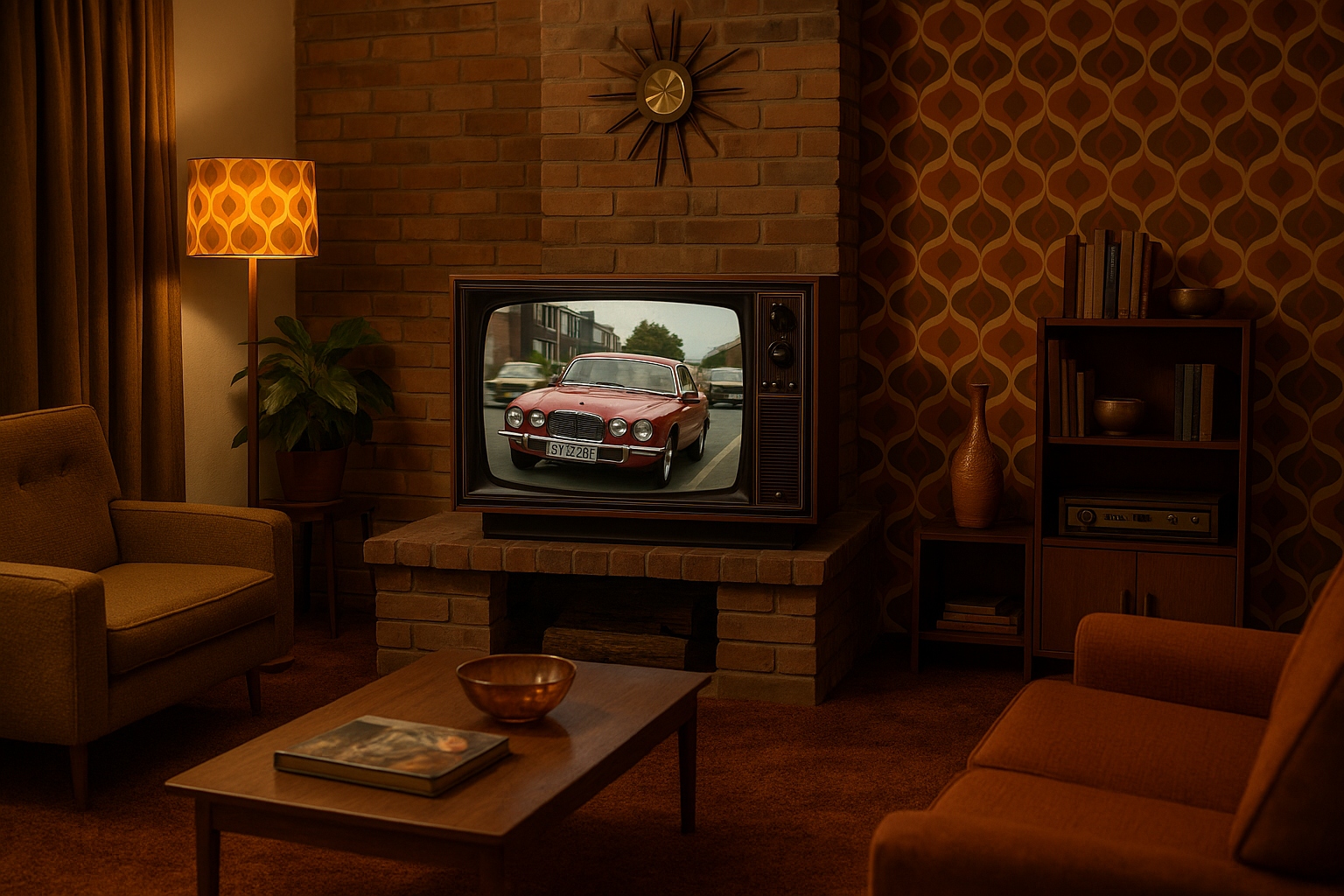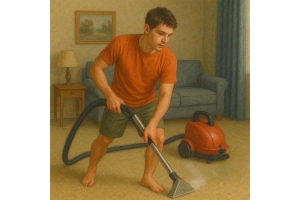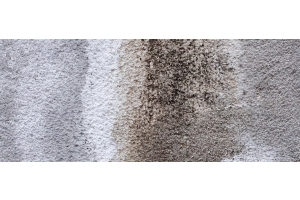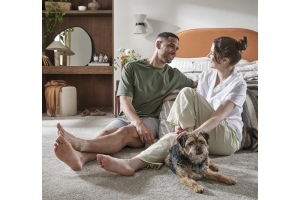
If you’re still scoffing at brown carpet akin to the comedic relief in a 70s cop drama, then you’re behind the times. Way, way behind. Where have you been the last decade? Brown carpet has staged a triumphant comeback that makes Elvis Presley’s ’68 Special look like a warm-up act at Butlins. It’s the new cool. The polypropylene equivalent of Robert Downey Jr. And it’s not going away anytime soon.
The stuff you're looking for:
* Brown carpet was once considered 'old fashioned' and 'boring'
* In our modern world of sterile colours and white walls, brown has made a fashionable comeback
* The world's most stlyish personas have embraced brown carpet for their homes like a boss
* It's not all about hanging onto the past. Brown carpet is here for the future.
For years, brown carpet has been the Ken Adams of interior design. Often overlooked and overshadowed by quick-burning modern trends, yet quietly dignified; awaiting the long-due resurgence of appreciation. Brown carpet has swaggered back into the modern spotlight. The carpet world has turned. The shagpile is back.
And thank God for that. Grey, beige and “eggshell white” have brought a minimalist vibe to our contemporary world, sure. But, it’s also been a clinical experience where colour and personality seem to have been prohibited. For some reason, colour has bled out of our daily lives – from clothes to vehicles, the wide spectrum of tones has become boiled down for a banal landscape of washed-out colours that inspire less emotion than Steven Segal’s acting range.
Brown has returned to reset our love affair with hues that radiate with attitude. Here’s the backstory to why brown carpet is back in the status chamber, and why it’s oh-so-cool. Starting with a step back in time.
The crime scene of cool
Let’s roll back the years to the 1970s. The Sweeney, to be exact. That magnificent whirlwind of brown flares, copper-red Ford Consul GTs, and – yes - gloriously brown carpets. Back when technological conformity was non-existent and permed hair remained firmly unisex, brown was more than a colour. It was a lifestyle.
Every living room appeared to have been dipped in dark chocolate fondue. People used ashtrays the size of satellite dishes, and curtains loomed as though moonlighting for Elton John’s overcoat. Everything was fabulously dense, and there, centre stage, was plush brown carpet, soaking up cigarette smoke and testosterone like a horizontal sponge of abject power. Your carpet could tell you more about your lifestyle than you’d ever admit to.
It was the national hue, slathered across wallpaper, wardrobes, and even the nation’s collective mood. And no show embodied this sepia-soaked spirit better than The Sweeney; a show so gloriously brown you could practically smell the Brut 33 through the 12-inch screen.
The Sweeney wasn’t just a London-based police drama. It was a two-fisted, gravel-voiced rampage through a city that looked like it had been built entirely from chipboard and nicotine tar. Starring John Thaw as DI Jack Regan and Dennis Waterman as DS George Carter, this was law enforcement with sideburns, swagger, and just enough ethical flexibility to make today’s HR departments keel over.
Brown was everywhere. Regan’s suit? Brown. The Granada? Brown. The pub carpet? Brown with a hint of mustardy brown. Even the sky, filtered through a pall of cigarette smoke and industrial soot, was tinged with something distinctly toffee-coloured. The show looked like it had been filmed on a roll of sandpaper. Viewing figures? Upwards of 20 million people. All of whom either had, or aspired to, brown carpet. Naturally.
It was also, accidentally, kind of stylish in that anti-style way that only the '70s could manage. This was the gritty glamour of The Sweeney. It wasn’t concerned with clean living or clean consciences. It was more cigar ash and fry-ups than kale and mindfulness. Carter and Regan weren’t so much detectives as walking hangovers with warrant cards.
And the set design, all Formica, frosted glass, and suspicious stains, was the perfect visual echo of the great British mantra at that time. There was something oddly honest about it all. The brown of The Sweeney wasn’t trying to be cool. It was trying to cope. It was the colour of damp optimism, of British bulldog grit, of people just trying to get the job done, preferably before the pub shut.
That unwavering addiction to hope and survival seems to underpin our current landscape. Whereas the 1970s and brown created a double act that has been shunned for decades, we’ve now realised that they were onto something. There was method in the murk, and you don’t need a squealer to tell you the facts.
Brown carpet. It makes sense.
Brown is practical. It wears down slower than a granite block. It survives your social life, your pets, parties, and post-breakup Pinot Noir without begging for dry-cleaning. Unlike a cream rug, brown carpet doesn’t scream when prawn cocktail slips off your serving tray.
Perhaps most importantly of all, brown carpet is brimming with character and identity. You are truly colourless should you declare that ‘brown is dull’ – back off to your greyscale world and overpriced matcha lattes. Your feet must be freezing with the emotional tone of your white tiles.
Let’s stop this beige-washed blasphemy right here. Brown is far from boring. Rather, it’s a bold, warm and deep colour that brings substance to every room. It’s the colour of good coffee, fresh earth, vintage leather, mahogany whisky, and every decent biscuit ever made. It is the unapologetic shade of interiors that mean business.
Brown carpet is good enough for houseplant-whisperer and demigod Harry Styles, who boasts of rich, cocoa-toned carpet in his Los Angeles pad. Drew Barrymore showcased her browned living room in Architectural Digest, opting for vintage sensibility over tacky Kardashian-style overdependence on sparkly things. Then there’s the overlord of quirky charisma himself, Jeff Goldblum, who reportedly has walnut-hued floors that hum jazz standards beneath your feet.
Need more? Cher. John Mayer. Brad Pitt. Pierce Brosnan. Tim Burton. Gwyneth Paltrow. Alice Keys. Anjelica Huston. Coincidence? Darling, please.
In a world obsessed with sterile design, brown carpet is a rebellious act. Rather than green tea from life’s vending machine, you’ve selected a glass of hot chocolate wearing a cashmere jumper. Psychologists agree; brown evokes security, stability and comfort. If you’ve got brown carpet, you’re not just stylish. You’re emotionally evolved, inviting friends and family into your fortress of emotional maturity – where boundaries and coasters cohabit with panache.
The comeback of brown carpet
You think brown carpet is outdated? So was vinyl. So was shoulder padding. So was Al Pacino (briefly). Now they’re all thriving. Just like the above, brown carpet never left the scene. It quietly endured the punchlines and Scandi shelving, waiting for common sense to realise that colour is not a crime.
Designers from Brooklyn to Brixton are laying it down like a red carpet for people with taste, soul, and just the right amount of drama. The added bonus? It’s the Swiss Army knife of soft furnishings. Understated, timeless, and not afraid to throw shade. A bit like Maggie Smith.
The previously unfair reputation is our own fault. We used it badly. We abused it. We threw it under pleather furniture, psychedelic bean bags, artex ceilings, cinderblock bookcases, posters of Starsky & Hutch, and lava lamps. Brown didn’t fail us. We failed brown.
But now, brown carpet is a triumph again. Like a blank canvas from Gucci, it brings everything you need for a solid foundation. What you do next is totally up for grabs, but whatever you choose, do it with gusto. Do it with Snug.
Embrace the chocolatey, comforting, gloriously grounded splendour of brown carpet and dispel the stereotype. Your home starts here, and you’ll thank yourself.
Don’t forget to stick and episode of The Sweeney on and whip up some Angel Delight for the full experience.
Coincidentally, The Sweeney has landed on Blu-ray for a 50th anniversay celebration.





